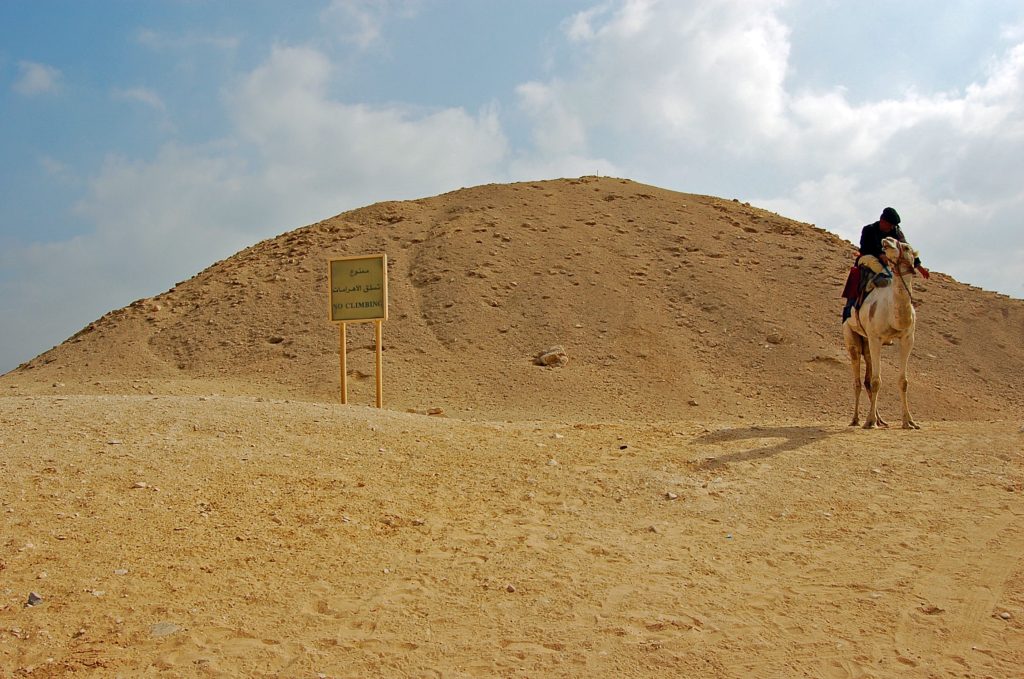
As the Pyramids of Giza prove, 1400 years before the Biblical Exodus, Egyptians were able to build massive tombs capable of enduring forever. They quickly lost that ability.
In about 2600 B.C., Pharaoh Sneferu erected the first true pyramid, made entirely of stone blocks, featuring smooth sides and encompassing 60 million cubic feet. It size was exceeded by the Great Pyramid of Giza, completed by Sneferu’s son Khufu in about 2560 B.C. Khufu’s pyramid, with a volume of about 90 million cubic feet, represented the apex of Egyptian pyramid building. The pyramid of Khafre, Khufu’s son, was about 14 percent smaller and that of Menkaure, Khufu’s grandson, was more than 90 percent smaller. After Menkaure, pharaohs stopped building pyramids entirely from stone blocks, settling for less expensive and less durable designs. The pyramid of Teti at Saqqara shows how quickly Egyptians had lost the art of pyramid building.
Teti, who ruled Egypt in about 2300 B.C., was the first pharaoh in Egyptian history to be assassinated, perhaps by his own bodyguard. His pyramid, occupying fewer than 4 million cubic feet, was essentially a pyramid-shaped pile of rubble, covered with a veneer of dressed limestone. The pharaoh’s mummy and his grave goods were placed in a stone chamber buried within the rubble. Robbers long ago removed the exterior stones and most grave goods, but left behind the so-called “pyramid texts” carved on the walls of the burial chamber, reflecting Egyptians beliefs about life after death and considered the world’s oldest religious writings.
If you want to learn more about Egyptian history, I will be speaking at a luncheon meeting of the Travelers Century Club at Seasons 52 at Keystone at the Crossing on July 27, 2019, beginning at noon. For more information and/or to reserve your place, contact Frank Basile at frank_basile@sbcglobal.net or 317-578-3585.